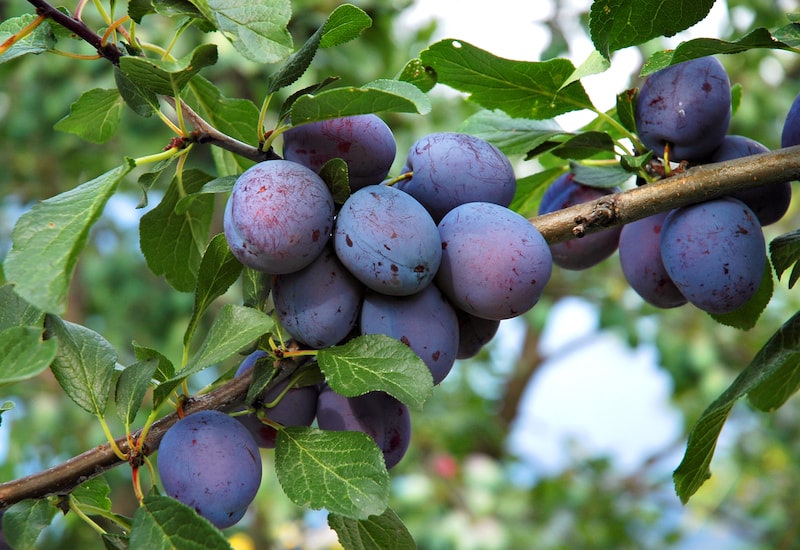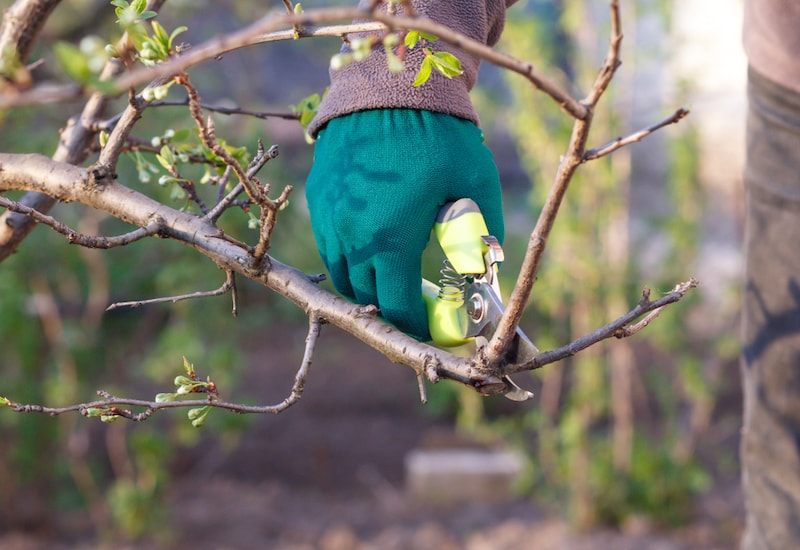Winter is the perfect time to plant a bare root plum tree. Easy-to-grow and yielding huge crops, these classic fruit trees are popular for good reason. Whether you want to eat sun-warmed plums straight from the garden or stock up your larder with jams and preserves, a plum tree is a versatile option. You can even grow them in large patio containers.
To find juicy yellow and purple plums, extra sweet greengages and fabulous mirabelles, visit our collection of high quality plum trees. Once you’ve chosen a variety, here’s everything you need to know to get your new plum tree off to a flying start.
Where to plant plum trees
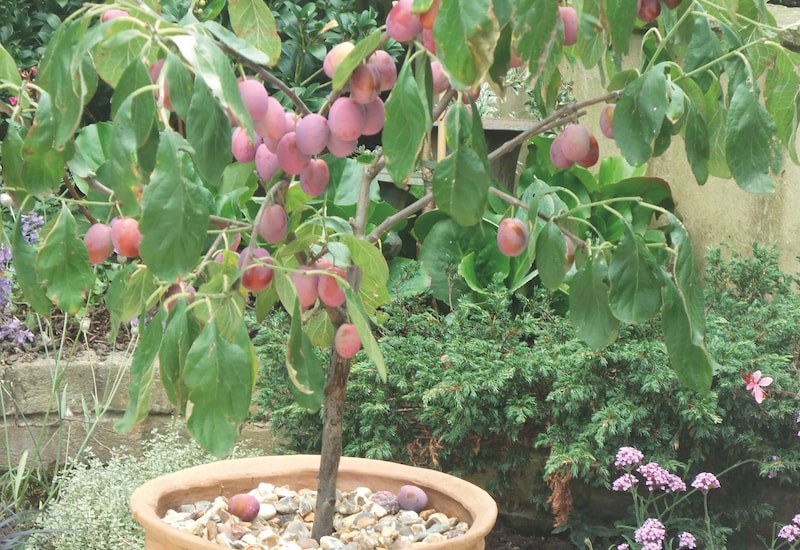
Image: Victoria Plum Patio Standard (St Julien) from Suttons
Plum trees like to grow in a sunny, sheltered spot well away from exposed areas that are prone to frost pockets. If you’re looking for a variety suitable for a cool corner, try a hardy damson plum which can cope with lower temperatures. For bright, south-facing areas, plant greengages which will ripen quicker and taste extra sweet.
If your trees start to bud and a late frost is forecast, simply place a layer of horticultural frost protection fleece over any blossom to prevent damage from the cold.
When choosing your trees, remember to pick a self-fertile variety or go for two in the same pollination group to get a good crop. Members of the same pollination group flower at the same time, fertilising each other to ensure that plenty of fruits set on your tree.
How and when to plant plum trees
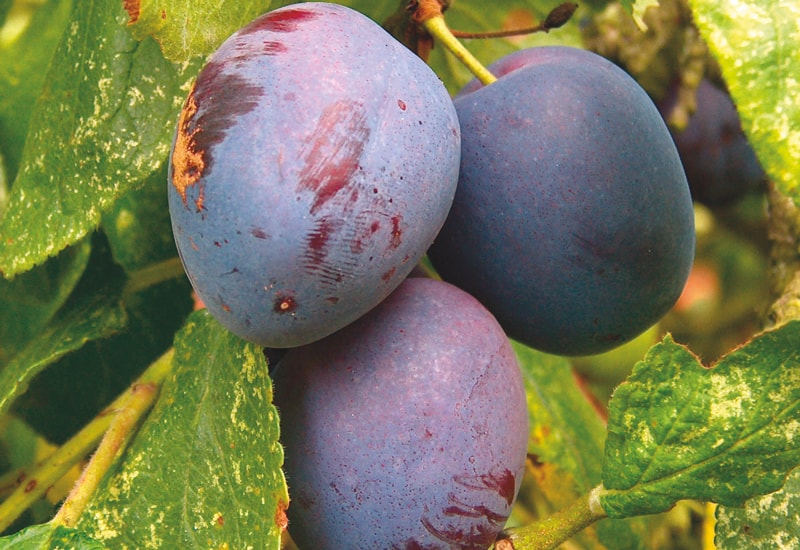
Image: Plum ‘Czar’ from Suttons
The best time of year to plant a plum tree is during winter, from November to March. At this time, dormant plum trees are available as bare-roots, which are easier to plant and more economical to buy. Outside of the winter months, container-grown plum trees can also be bought in leaf.
Step-by-step guide to planting a bare root plum tree:
- Soak the roots in water for 30 minutes
- Dig a square hole in the ground
- Bang a sturdy wooden stake in to provide support
- Backfill the hole to cover the tree roots keeping the juncture between root and stem level with the soil surface
- Water the base of your tree to firm the soil around the roots
- Apply a thick layer of well-rotted manure as a mulch, leaving a gap around the trunk
Alternatively, use a free draining, fertile multi-purpose compost to fill a large container for your dwarf plum tree. After planting, raise the pot off the ground using bricks or ‘pot feet’ to aid drainage and airflow. Don’t forget to label your plum varieties to keep track.
How to care for your plum tree
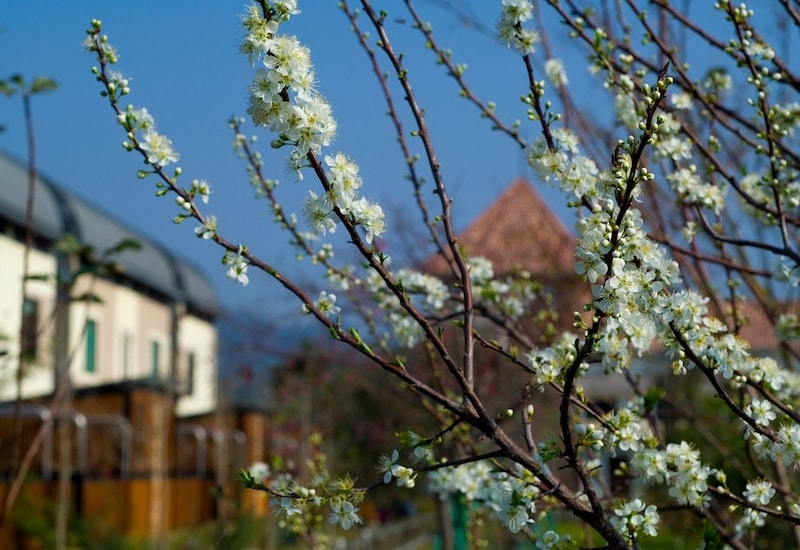
Image: Chen Liang-Dao/Shutterstock
During your plum’s first year, water it every week to help it establish. Add a layer of rotted manure as a mulch in spring to keep moisture around the roots. This will also provide a nice boost of nitrogen to help healthy green growth too. Always water your tree during dry spells as plums don’t like to dry out.
Thinning your fruits in June will improve the health and quality of your plum crop. Remove excess fruitlets, leaving just one or two every 5cm along the fruiting branches. Thinning prevents the branches from snapping under the weight of too many ripening fruits, and allows the tree to produce bigger, juicier plums.
Birds love plums as much as we do, and you might need to protect your fruit during the summer months. Keep an eye out for bird damage in winter too – pigeons love picking off embryo fruit buds during the colder months which can harm the next year’s crop. Cover your trees with bird netting to deter the feathery thieves but remember to check regularly for any that become trapped or caught.
How and when to prune your plum tree
In the first few years of growth, lightly prune your plum tree to establish the shape you want. If you have a free-standing tree, aim to create an open goblet shape to encourage plenty of airflow. Once the main framework of the tree is there, very little extra pruning is required beyond removal of damaged or badly placed wood.
Any pruning work is best done in early summer to reduce the risk of transmitting silver leaf disease, a fungus that enters fruit trees through pruning wounds. Always use sharp, clean secateurs and move the waste wood to the bonfire or garden waste bin afterwards.
Best plum varieties to try
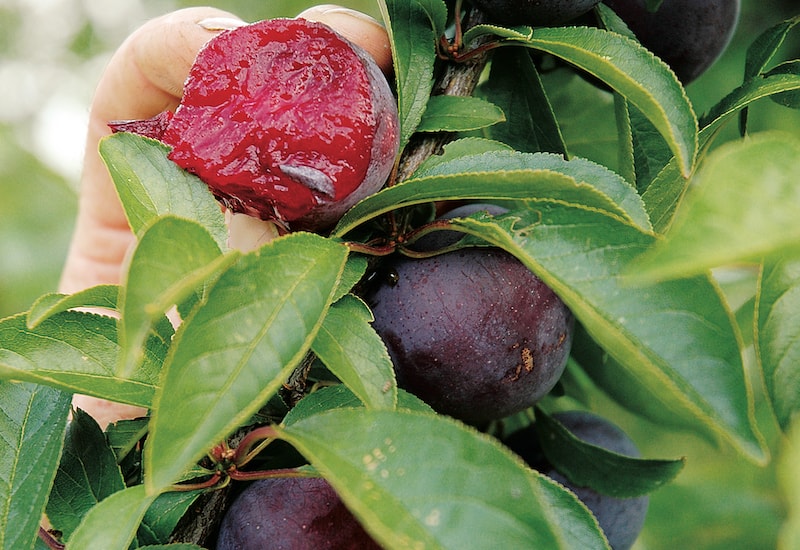
Image: Plum Tree ‘Beauty’ from Suttons
There are plenty of wonderful plum varieties to try, from heritage classics to cutting-edge hybrids with fantastic new flavours. Here are a few of our favourites to get started:
- ‘Victoria’ plum – patio standard. The most popular plum in Britain. Delicious eaten fresh from the tree and perfect for cooking into jams and preserves. Grafted onto a dwarf rootstock, this variety matures at a height of 70cm, perfect for patio containers.
- Mirabelle plum ‘Ruby Column’. This self-fertile variety has an unusual upright habit and eye-catching pink blossom in spring. The large purple, peach-flavoured fruits are ideal for crumbles and pies. Choose between semi-dwarf or semi-vigorous rootstock.
- Plum ‘Yellow Pershore’. A self-fertile yellow fruiting plum first introduced in 1827. This is a heavy-cropping variety on a semi-vigorous rootstock which reaches a mature height of 4m. The fruit is firm and dry with a lovely sweet flavour, second only to ‘Victoria’ in popularity.
- Gage ‘Old Green Gage’. Semi self-fertile greengage with delicious sweet fruits ready to pick when green in August. Grafted to a semi-dwarfing rootstock, this is a great choice for small space gardeners who still want that heritage plum taste.
We hope you’ve found our guide to growing plums helpful. Check out our expert advice on growing fruit trees for more advice and inspiration.
Lead image: Plum (Prunus) ‘Herman Organic’ from Suttons
Last Updated on September 13, 2024 by Suttons Horticultural Team

